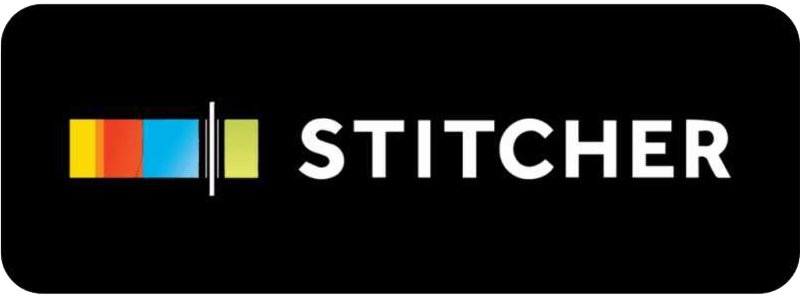February 16, 2022
Listen on:
Leadership Versatility & The Birkman Method

Kenning Partner Laurie Burkland Waller speaks with Mike Merrill about leadership versatility, a trait she has found to be especially important for collaboration and effectiveness. Leaders with versatility have a kind of multilingual fluency: they are better able to adapt to stakeholders both inside and outside the organization and meet the needs of a particular person in a specific context.
Laurie explains how the Birkman Method is an especially useful assessment for executives and teams looking to deepen their leadership versatility. Offering insights on four important dimensions – motivation, self-perception, social perception, and mindset – the Birkman can help colleagues adapt in ways that suit their teammates best. Finally, Laurie suggests some simple ways that anyone can develop greater leadership versatility.
Listen
Authors:
Related Articles:
Transcript:
Mike: Welcome to Knowing Kenning. This is Mike Merrill and I’m here with Laurie Walller.
Laurie: Hi, Mike. Hi everyone. We’re so excited to talk to you about a really important topic today.
Mike: Laurie, I know you have coached a lot of folks, especially people in leadership roles. And I think you’re beginning to see some patterns. You’re finding some. Facets of leadership that are especially important.
Laurie: I would say that leadership versatility is the skillset I’m seeing as most effective in leaders and executives these days. From profiles I’ve studied to leaders and executives with whom I’ve worked. This is really informing a lot of my work and focus in coaching engagements. And I think leadership versatility is opening doors for effectiveness and business results.
Mike: We all have a sense of what versatility means, but what does it mean in this context, leadership versatility.
Laurie: To me it means that when leaders develop a variety of approaches for how they team up with professionals in their environment, how they handle different contexts, they really can create enhanced engagement and improved performance levels. To take it to a metaphor which we former management consultants like to do all the time.
I think of it as leadership fluency as almost a multilingualism, so people can move on from a native tongue, a default or a one size fits all leadership style and really develop multiple leadership languages so they can collaborate and communicate almost adaptively and uniquely with colleagues, clients, customers, partners, so that they can meet the expectations and needs of those individual dynamics.
Mike: You’ve mentioned some of the kinds of languages they need to speak. The languages of colleagues, partners, clients, et cetera. But also I would think that because there’s a focus today on leaders not just hiring the people who look and sound and have the backgrounds that are most like them, but are being encouraged to hire a broad range of people that would require some fluency as you put it.
Laurie: Exactly. To really harness the diversity and strength of a variety of colleagues, members of a team. It really is an opportunity for a leader to speak these multiple languages.
So, I have a philosophy that the most effective leaders almost view their workday, their day full of meetings and contexts, as if they’re traveling around the world, if they can think through each context they’re walking into, and what language to speak to the most effective, what gestures, what norms, what principles will work best in that moment. That’s when they’re getting the most out of the people, the talent, the ideas around them, and they can’t do that if they only have one style.
So it’s that versatility that’s context specific, audience specific, almost as if they can turn their own dial to be effective in a variety of settings. Those are the leaders who I admire most, who I’m seeing as most effective and impactful.
Mike: Laurie, obviously this is a huge topic with a lot of different angles that we could discuss, but I think today you wanted to focus on a particular measurement tool that you find helpful in facilitating this fluency.
Laurie: If I were to keep with that international example, that multilingual leadership, there is a resource that I find to be particularly effective at enabling that I think of it as the passport the leader can carry to move around the world in a day to be effective in a variety of contexts. And that’s the Birkman Method.
Mike: So I’ve heard about the Birkman Method from you and from some of your colleagues at Kenning, but what is it?
Laurie: So the Birkman Method is named after Dr. Roger Birkman. He was a fighter pilot in World War two, and also an instructor. He was shot down, piloting a plane over Belgium and escaped Nazi forces to return to the US he pursued a PhD in industrial and organizational psychology, because he was so interested in the individual differences he saw in both visual and interpersonal perceptions, how they impacted pilot performance and learning that he went on to develop this methodology that started in the fifties has now celebrated its 70 year anniversary, and is an outstanding tool that leaders can use to really develop versatility.
So many of us in leadership have taken all of the different surveys. This one is a little lesser known, but in my opinion, more impactful than some others. It has been completed by millions of people, it’s been used by thousands of companies worldwide. It’s used in 40 countries and has been delivered in more than 20 languages. And finally it has been validated by the US national science foundation.
Mike: What does the Birkman Method measure?
Laurie: It reveals four key perspectives for leaders: motivation, self perception, social perception, and mindset. And in understanding these perceptions and how they influence each other, individuals can better understand the emotions and actions that derive their approaches to work in life, as well as those that drive their colleagues.
Mike: You said there are four key perspectives, motivation, self perception, social perception, and mindset. Can you tell us first about motivation?
Laurie: In a Birkman report, we learn about motivation and interests. So there’s a particular component of this report that tells us what types of activities will foster greater engagement and enjoyment, as opposed to those that can drain energy or result in fatigue. And knowing about motivation and interests helps people find fulfilling career paths, fulfilling roles, and can ensure workplace satisfaction.
Mike: That’s motivation. What about self-perception?
Laurie: So self perception reveals how we see ourselves and it drives much of how we show up in the world around us. It’s driven certainly by how we’ve learned to use certain styles to get positive results and past situations, and Berkman calls this usual behavior.
And it’s measured on the assessment as typically how a person feels they approach tasks, manage relationships, or contribute to their community. So imagine a continuum with very different descriptions on each pole: Maybe decisive decision maker versus considerate decision maker. We will get to know a leader’s usual, meaning how they usually approach a particular component of their work.
What I love about usual, it’s a marker of where they start, of where they sort of default. And what’s really interesting is that Birkmans tells us that the usual is both learned and adaptable. So this is the moment when leaders can display their versatility by trying alternate styles along a continuum to pick what will work best in a variety of situations.
Mike: So that’s self perception. What about social promotion?
Laurie: So social perception is an individual’s underlying context or filter that they use to determine if a current situation feels comfortable. Because this is a measure of an internal state it’s not always apparent to others how someone will act or react when circumstances change.
Birkman calls this needs, and this information allows a leader to anticipate their reaction to new or changing situations. Hopefully this will allow them to avoid the resulting stress behavior that might show up if they don’t manage these expectations. And these needs and expectations are an invisible driving force behind behavior. And frankly, they’re the differentiator between Birkman and some of the other instruments out there.
Mike: And then finally, mindset, I think you said is the last key perspective.
Laurie: Right. In any professional development, understanding mindset or framing or core thoughts are really key to advancing skills and effectiveness.
So behind every personality and behavioral style is this deeply rooted set of attitudes and perspectives that impact everything we do. This is the last element of Birkman that’s really important to uncover, that allows people to set a path forward for leadership development.
Mike: So in addition to these four key perspectives, motivation, self perception, social perception and mindset, is there anything else that’s provided?
Laurie: There is plenty of occupational data available through Birkman. Also, Birkman does a really nice job of comparing a respondent’s answers to their extensive database to point out how similar responses were to people in various functions and industries. It can be used for career selection, career change. There is a world of possibilities and that information can be used in that occupational selection way.
Mike: So you’ve mentioned usual needs and stress behavior. How are these interconnected?
Laurie: This is why Birkman can be really valuable. Usual behavior is your strength behavior, the style you exhibit when things are going well. These are strengths and how others see you. Needs are what you need from other people and your environment to be satisfied and engaged. And when your needs are met, your usual, or strength behavior, shines, but when your needs are unmet, you are likely to respond with a reactive, ineffective, unproductive behavior that exhibits stress.
Examples might be when you’re impatient, when you’re edgy, overly competitive, for example. So Birkman really makes this connection that if you know your needs, if you negotiate to get them met, if you pick projects and roles where you’re more likely to be treated the way you want to be, your strengths will shine.
Mike: What does that look like when your strengths actually shine?
Laurie: Imagine the picture of a tree outside your window. Picture a tree that’s thriving. Big, bright green shiny leaves. That would be a tree performing in its strengths, likely because its needs were met. Maybe the ideal soil conditions, hydration level, amount of sunlight. So when needs are. The usual behavior, the strengths and styles show up.
But when the needs are not met, imagine a drought, imagine a storm, something either intense and short or prolonged, you’ll end up displaying stress behavior. That would look like a tree with its leaves falling off and its bark beginning to curl. Birkman does this really nice job of helping leaders understand their own needs. So they can get the met and thrive, but furthermore, it allows them to understand the needs of the people around them and to customize or use a versatile approach to bring out the best in others.
So for example, if one colleague needed really firm direction, real use of authority really got a firm strong voice in what needs to be done. If that matched their needs, they would thrive and do great work. But maybe another colleague really needed more of a hint, more of a suggestion, more coaching than advising. That would be the leader’s opportunity to implement an alternate style, to really bring out the best in that colleague. Almost bring out the bright green shiny leaves in that colleague to allow them to shine.
So I like that example because it really shows us how it’s hardwired, why some people will thrive and Birkman lets us understand what behavior we’ll see from people and why when we know this information about them.
Mike: We’re talking about leadership effectiveness through versatility. Why is Birkman a better assessment than others? Do you think in this regard?
Laurie: There are a handful of reasons why it’s really good at this. One is because of that focus on needs. That is not present in some of the other leadership instruments out there, and it really is a standout. It enables people to get what they want out of their environment so that they can thrive.
And when we know the needs of others, we can harness the diversity and strength among members of the team. I think secondly, Birkman provides really positive feedback. It’s a very non-judgemental instrument, no matter where a leader falls along a continuum, it’s framed as very positive.
The only catch is it the best in the moment? Working with other instruments, sometimes there are scores that make people feel bad. That label or offer a harsh criticism or judgment and Birkman really steers clear of that.
Mike: Are there ways of customizing Birkman for individual leaders in particular situations?
Laurie: Birkman practitioners can customize different elements of the report based on a leader’s goals. They can gather that data and offer a view on how a leader approaches business development. They could gather that data and provide a view of how to use influence styles.
Again, they could use that data to make career recommendations. So it’s really customizable. And finally many business schools and their executive education organizations won’t run a program without Birkman to start. There’s a lot of good data that shows it’s a really valuable tool.
Mike: Let’s say you’re in a coaching engagement. When would you recommend using Birkman as a way of helping someone develop their versatility?
Laurie: There are two contexts where it is very impactful. Leadership and executive coaching and team effectiveness. The examples we’ve given have really been focused on the leader when they increase their self-awareness, when they are in some sort of leadership transition, maybe a new promotion, a new organization.
These are the moments where we can rope this in for improved self-awareness looking for alternative styles to use and really engaging the talent and stakeholders around them. Secondly, team effectiveness is a really great place to employ Birkman toward leadership versatility.
When teams can find common language, more objective wording for describing differences in style, it really allows them to problem solve where some of their conflicts have been. Where miscommunication may have been, where misperception may have been. And so we like to use Birkman for team building programs because it allows understanding of a variety of styles.
And again, it really harnesses the strength of diversity to develop the collaboration, communication, and trust that allows leadership teams and executive teams to thrive.
Mike: Do you have some examples, Laurie, where using the Birkman method has paid off, especially in terms of developing leadership versatility?
Laurie: I would say one particular example stands out. And that was when a professional services leader told me that he completely customized his approach to year-end performance reviews. He had a Friday on his calendar at year end, and he needed to deliver eight feedback sessions to eight different direct reports.
And he used the data from each colleague’s Bikrman to pick an approach that would allow each individual to hear the information in a way that they could most easily accept and respond to it. So, at 8:00 AM he sort of set his dial to deliver direct uninvasive, to the point feedback because he knew that would be best for that particular colleague.
And then at 9:00 AM, for example, he adjusted his leadership style and communication approach to be more careful, cautious, selective in his word choice to show respect for that colleague who really needed things to be packaged in a cautious, considerate way.
Mike: That’s an example of an individual leader being helped by this approach. Do you have an example of an executive team where Bikrman helped them with their overall versatility?
Laurie: I would say another example would be in our work with executive teams where we see breakthroughs. In knocking down some of the dynamics that hold teams back, knocking down assumptions, reducing misunderstandings. So one leader in a biotech firm told us that our work with Birkman for his executive team helped him use objective language to call out differences in how leaders used authority.
One member of the executive team used to assert himself with real clarity and firmness. His intent was to provide clear direction on where he stood. However, once he learned that his colleagues responded much better to a low key approach, maybe with more questions and suggestions, he adjusted that approach again using that leadership versatility, and the leaders had a breakthrough.
So what used to be, “John is a heavy handed jerk” became, “John is demonstrating a high usual approach, and I prefer a low usual approach.” It can sound a little funny, but when teams have wording they can hold onto that. Doesn’t sound too personal to call out differences, they can make these minor adjustments that lead to major breakthroughs.
Mike: So let’s say you’ve administered Birkman to a leader and to the leader’s team. What is the ideal approach that you would propose in helping them?
Laurie: So the ideal offering is to select a work team and executive team that really wants to grow in its productivity, its effectiveness.
And the offering that I recommend most as a starting point for an organization is to offer each individual on that team a one-on-one to understand their own individual results and start practicing and working with that new knowledge. These new techniques really build up their skillset. As a second step in an engagement, it’s bringing that whole team together to understand the team’s profiles.
Where do we fall as a group, along a variety of continuums? How do we usually respond to each other? And what do we usually need and what type of stress behaviors do we show as a group? And in that team dynamics team building setting, really exciting unlocks can occur.
People can see dynamics to decision-making that are helping or hindering, people can see approaches to how structured work should be, or shouldn’t be to bring out the whole team’s dynamics. So this sort of one, two punch solution really allows individuals to be successful and allows teams to be much more high functioning.
Mike: So that’s a team’s versatility. How do you know when a leader really is becoming more versatile?
Laurie: Whenever I’m speaking with leaders who tell me they have a particular style, I push back and tell them that they should have more than one. When I ask someone, how do you give feedback or how do you make decisions or how do you handle a sensitive feedback conversation?
When they give me an answer, I tell them that they have more room to grow, because they shouldn’t have just one answer. They should have many, ideally high performing leaders would say, “It depends on the situation, Laurie. It depends who I’m talking to, Laurie. It depends on the goals, Laurie.” And if they do that, I know that they are a leader to watch and a leader we want to really help to throw.
Mike: So ideally I’d have a Birkman, my entire team has a Birkman. All my peers have Birkman’s, but in lieu of that, what would you recommend I do today to start building my leadership versatility?
Laurie: So what if you don’t have someone’s Birkman? What if you’re a leader and you’re trying to engage the best of a colleague without knowing a report with their ratings. One of the best things you could do is think about a question you could ask, so you could learn about their preferences and then respond accordingly.
A typical example would be if you’re assigning a task to a colleague you might say, how can I be most helpful to you? Should I outline the goals of this project? And let you run with the approach, or would you like to sit down and map out interim milestones? The first three phases of your work. When you can ask, how can I be most helpful and give someone two opposite options? They’re likely to give you a really good answer. And once you know what they would respond to best and stay in that lane.
Mike: That’s a great example. Do you have any others?
Laurie: A second example would be if a colleague were to call you and say, I’m really frustrated. You might say to them, how can I be most helpful? Would you like a thought partner to brainstorm solutions? Or would you like a place to vent and I just listen. Anytime you can move from, how can I be helpful to, how can I be helpful, A or B, you’re more likely to get good data from your colleagues. And exhibit the leadership style and collaboration style that would work best for them in the moment.
So until you have the chance to learn through Birkman, these are some things you can be acting on right away.
Mike: Laurie, this is both challenging because it tells leaders that, hey, you can’t just do things your way, you’ve got to think about who you’re talking to when you’re talking to them, what their needs are as well. But it’s very helpful too, because it opens the door to us developing that versatility. So thank you.
Laurie: It’s really been a pleasure, Mike. Thank you so much.







